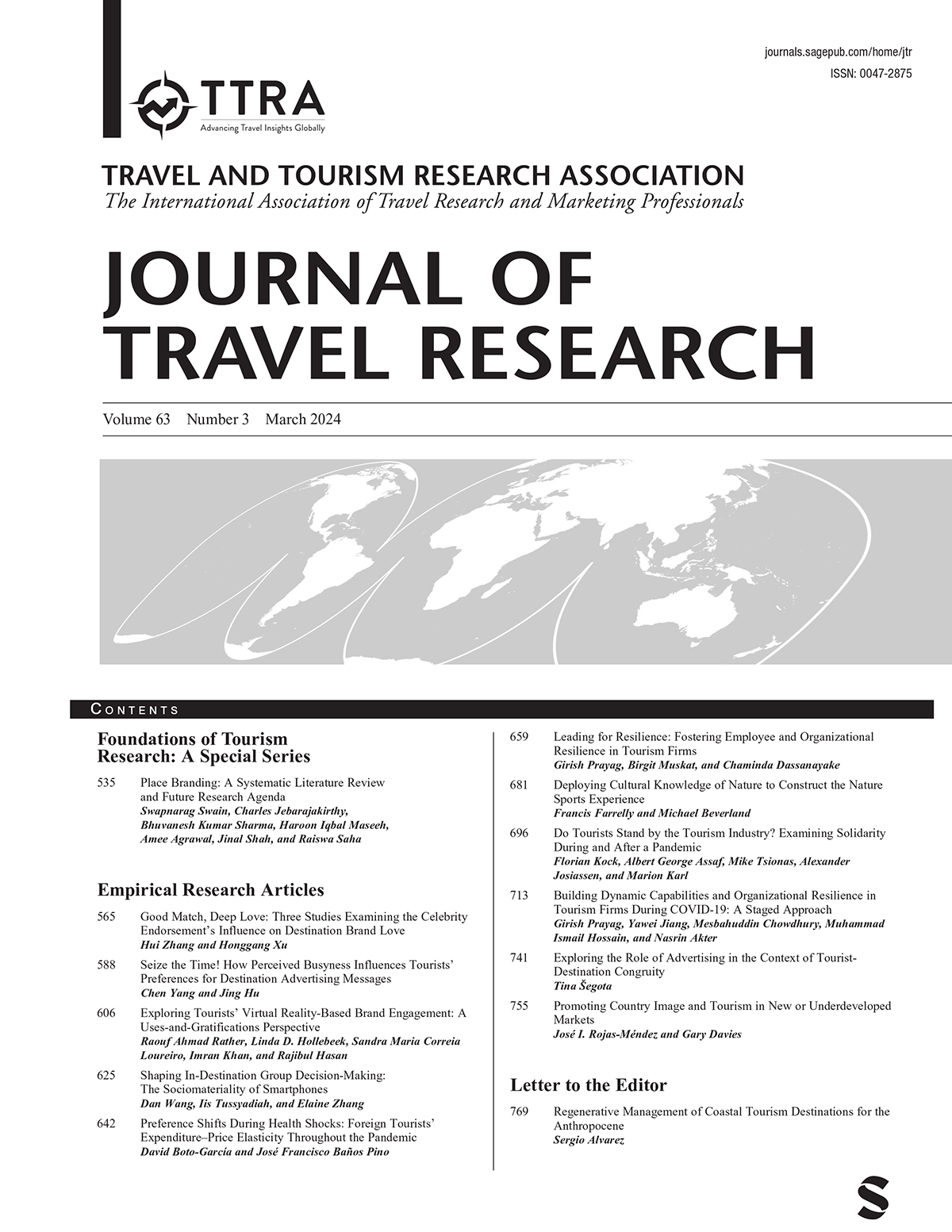基于多混合频率数据的旅游需求预测:一种反向混合数据抽样方法
IF 7
2区 管理学
Q1 HOSPITALITY, LEISURE, SPORT & TOURISM
引用次数: 0
摘要
由于现有旅游需求预测模型的局限性,低于旅游需求频率的数据需要提前处理,不能直接用于模型,导致旅游需求预测的时效性和准确性下降。本研究以新冠肺炎疫情前和疫情期间的美国入境旅游为例,通过三类模型的构建和比较,系统考察了数据频率处理对旅游需求建模和预测的影响,重点研究了首次开发的多混合频率规范的反向混合数据采样(RMIDAS)模型。结果证实了多种混合频率模型在提高旅游需求预测精度方面的积极作用,该模型可以直接利用各种原始数据频率。本研究也为未来高频旅游变量预测研究提供了重要指导。本文章由计算机程序翻译,如有差异,请以英文原文为准。
Tourism Demand Forecasting With Multiple Mixed-Frequency Data: A Reverse Mixed-Data Sampling Method
Due to the limitations of existing tourism demand forecasting models, data with frequencies lower than those of the tourism demand need to be processed in advance and cannot be directly used in a model, which leads to the loss of timeliness and accuracy in tourism demand forecasting. Taking the inbound tourism of the United States prior to and during the COVID-19 pandemic as an example, this study systematically examines the impact of data frequency processing on tourism demand modeling and forecasting, through the construction and comparison of three categories of models, with a particular focus on the first developed multiple mixed-frequency specification of reverse mixed-data sampling (RMIDAS) model. The results confirm the positive effect of multiple mixed-frequency models, which can directly use various original data frequencies, in improving the accuracy of tourism demand forecasting. This study also provides important guidance for future research on high-frequency tourism variables forecasting.
求助全文
通过发布文献求助,成功后即可免费获取论文全文。
去求助
来源期刊

Journal of Travel Research
HOSPITALITY, LEISURE, SPORT & TOURISM-
CiteScore
18.90
自引率
9.00%
发文量
66
期刊介绍:
The Journal of Travel Research (JTR) stands as the preeminent, peer-reviewed research journal dedicated to exploring the intricacies of the travel and tourism industry, encompassing development, management, marketing, economics, and behavior. Offering a wealth of up-to-date, meticulously curated research, JTR serves as an invaluable resource for researchers, educators, and industry professionals alike, shedding light on behavioral trends and management theories within one of the most influential and dynamic sectors. Established in 1961, JTR holds the distinction of being the longest-standing among the world’s top-ranked scholarly journals singularly focused on travel and tourism, underscoring the global significance of this multifaceted industry, both economically and socially.
 求助内容:
求助内容: 应助结果提醒方式:
应助结果提醒方式:


